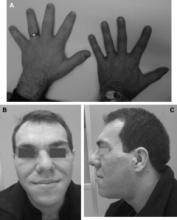Diabetes got a lot of the attention at the annual meeting of the American Association of Clinical Endocrinologists in San Diego, and with good reason. We know that diabetes research is important.
But a clinical endocrinology meeting is about more than diabetes. Other studies presented here focused on the endocrine conditions that don’t usually make the front pages in the mainstream media, but the research represents work that is equally important to the clinicians who have made these conditions the focus of their careers, as well as to the patients those physicians hope to help.
Take acromegaly, a condition caused by abnormal production of growth hormone that causes various tissues in the body to enlarge. Acromegaly occurs in 6 of 100,000 adults, according to the website of the National Library of Medicine.
This condition isn’t nearly as common as diabetes, but this year’s AACE meeting highlighted some hope for these patients. A drug called octreotide helps acromegaly patients by controlling the release of growth hormone, but the current standard treatment involves monthly injections. Preliminary data presented at the meeting showed that an octreotide hydrogel implant can provide steady release of the drug for 6 months, which would make a real difference in the quality of life of these patients.
Other common endocrine disorders got their day in the sun in San Diego: thyroid and parathyroid disorders were featured in hot topics sessions, and a general session was dedicated to a review of recent guidelines for managing osteoporosis.
And, “Medical Therapy for Acromegaly” got its own general session. But wait, there’s more. The AACE is issuing new clinical practice guidelines for the diagnosis and treatment of acromegaly later this year.
If diabetes is the Marcia Brady of endocrinology, perhaps acromegaly is Jan, but it looks like this year she’s coming out of Marcia’s shadow.
–Heidi Splete (on Twitter @hsplete)



